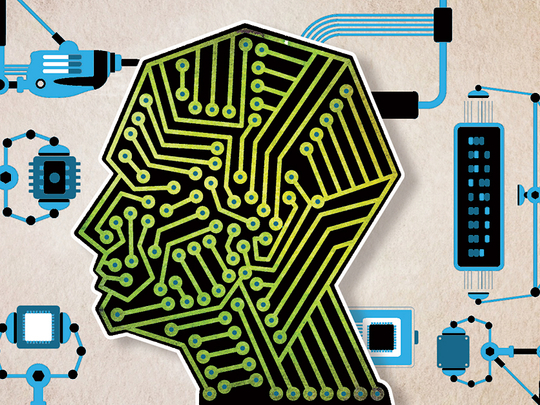
London: The fear that robots will destroy jobs and leave a great mass of people languishing in unemployment is almost as old as automation itself. And yet, from the Luddites onwards, the fears have been eventually proved wrong, and the economy has ended up stronger than before.
But more and more analysts worry that this may be about to change. And on Thursday the Bank of England’s chief economist warned that this wave of automation is threatening skilled roles. The jobs of the middle classes, with their expensive university educations, are now at risk. As a result, a huge number of jobs that were previously thought safe from machine-led disruption are firmly in the firing line.
Science Even scientists are not safe from the march of the machines. Robots have been used in laboratories for a couple of decades to perform onerous tasks. Now advancements in automated systems and artificial intelligence have created a machine that cannot only perform experiments, but interpret the results, plan further experiments and make discoveries all on its own.
Adam, a scientist-robot, created in a partnership between Aberystwyth and Cambridge universities, became the first machine to independently discover new scientific knowledge in 2009. Now Eve, a newer version, continues the work for automatic drug discovery, identifying potential malaria drugs at Manchester University.
Machines cannot disrupt the world of art and music, where creativity flows direct from the soul, right? But if that is the case, then how did Tupac perform at the Coachella festival in 2012 — 16 years after his murder in Las Vegas? By way of a hologram, of course.
The rapper’s hologram was one of the most prominent examples of technology undercutting artists and performers, but it was by no means the first. Generative art, for instance, pushes the work of creation back a step. No longer are artists creating a specific music or painting: instead, they make a bot that can endlessly create, out-producing any human artist. And while films and television don’t yet have fully artificial actors performing in them, the ability to generate new performances from data harvested from old is slowly changing how the industry works.
The most notable example is the cameo by Marlon Brando in Superman Returns, released two years after his death. Footage from Superman (1978) was mixed with computer generated effects to create a new scene. Medicine For the author Martin Ford, an expert on robots, medicine offers one of the few areas where a significant number of jobs will survive the rise of the robots.
A career like nursing, he said, is the perfect mixture of almost everything a machine finds hard: fine motor skills, specialist knowledge, a wide variety of potential complications and the need to provide a friendly face, as well as just efficient service, all mean the profession is likely to stick around.
But that does not mean all of medicine is protected in the same way. Doctors are expensive to train and hire, which means they are ripe for replacement by machines.
IBM’s Watson project, most famous for winning an episode of the American game show Jeopardy. can understand spoken questions and seek the answer from a massive database of technical knowledge — perfect for aiding, or even replacing, a GP when it comes to diagnoses and simple prescriptions.
Meanwhile, the Da Vinci robot is already capable of performing surgeries no human surgeon would be able to handle. Currently it is remotely operated, letting a surgeon from one central hospital perform challenging operations across the world. But add a little bit of computer vision and Watson’s understanding of the human body, and who knows where we could end up? Pilots The notion of pilotless commercial airplanes would be horrific for most passengers and that is the main reason why we will not be seeing passenger-only excursions to Magaluf any time soon.
But it is feasible. Any modern Airbus or Boeing aircraft can already be landed in thick fog without a pilot, while the advent of military drones underscores how pilotless flight has entered the geopolitical mainstream. Will it enter the realm of commercial travel? Passengers, and of course regulators, are the main barrier. Journalism Could you tell if the words you are reading were written by a machine? Chicago-based tech firm Narrative Science is betting big money that, if it gets its software right, you won’t know — and won’t care.
The company’s key product is Quill, a natural-language generation platform. Put in structured data, and it will spit out a convincingly written news story about what just happened. The software is already at work writing real news stories for a number of publications. It is particularly adept at breaking news from the worlds of finance and sport, where the information that comes in (on goals scored, or prices moving) is in a predictable format.
Law Law should be the ultimate human-only field. Much of lawyers’ work focuses on thorny issues such as the precision of common language or the interplay between the theoretical world of text books and the real world, and that tends to be the sort of thing that computers are bad at. But a lot of the day-to-day is actually surprisingly rote.
When everything goes to plan, jobs such as conveyancing, drawing up employment contracts or preparing wills can be simple. Even today, the amount of labour saved by pre-prepared templates is substantial: but as artificial intelligence improves, the need for a human lawyer in the vast majority of cases will shrink substantially.
— Guardian News & Media Ltd











